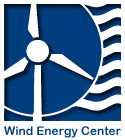Abstract:
Offshore wind turbines operate in a harsh environment and must withstand loading from wind, waves, and current, as well as wakes from nearby turbines. This complex loading causes failures in components and costly unscheduled maintenance for systems that are often difficult or impossible to access. Compared to onshore wind turbines, offshore turbines have lower availabilities and the operations and maintenance costs are 2-3 times higher. A wide range of load mitigation research has occurred to improve offshore turbine reliability, including improvements to the existing control system, and additional control actuators on the blades. Structural control devices, which have been successfully deployed in civil engineering applications for decades, are an alternative load mitigation strategy with a number of advantages including the ability to operate even when the turbine is shut down during extreme events. In this presentation, I will present my ongoing research on structural control applied to offshore wind turbines, including: evaluating the impact of semi-active control versus passive control; modelling of semi-active actuators such as magnetorheological devices; load reduction using structural control on monopoles and floating platforms; and novel damping concepts. I will also present my vision for future research in this area, as well as future collaborative renewable energy research at UMass Amherst.
Bio:
Matthew Lackner is an Associate Professor of Mechanical Engineering at the University of Massachusetts Amherst. He has a B.S.E. in Mechanical and Aerospace Engineering from Princeton University, an M.S. in Aerospace Engineering from MIT, and a Ph.D. in Mechanical Engineering from the University of Massachusetts Amherst. He conducted his postdoctoral research at the Technical University of Delft. His research focuses on offshore wind turbine aerodynamics and load control.

